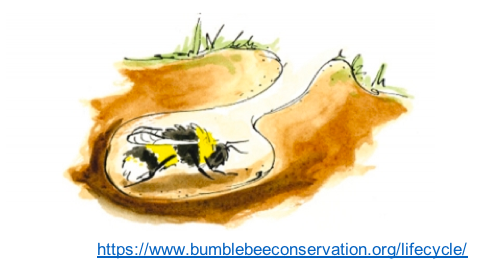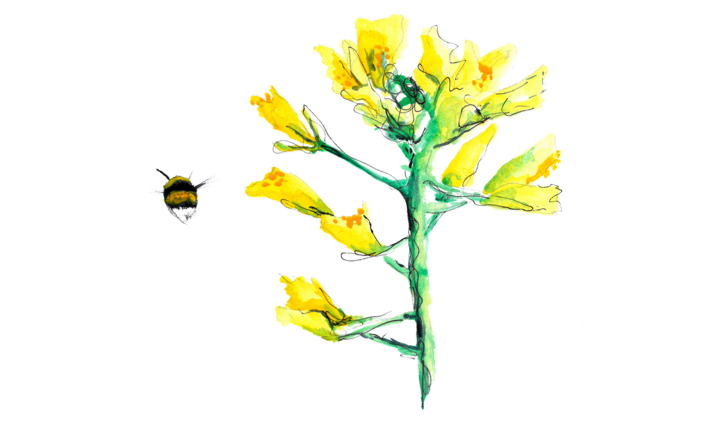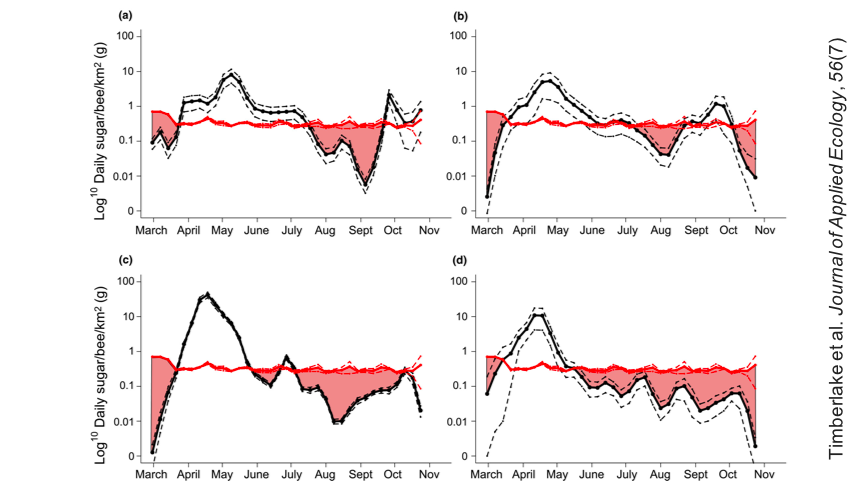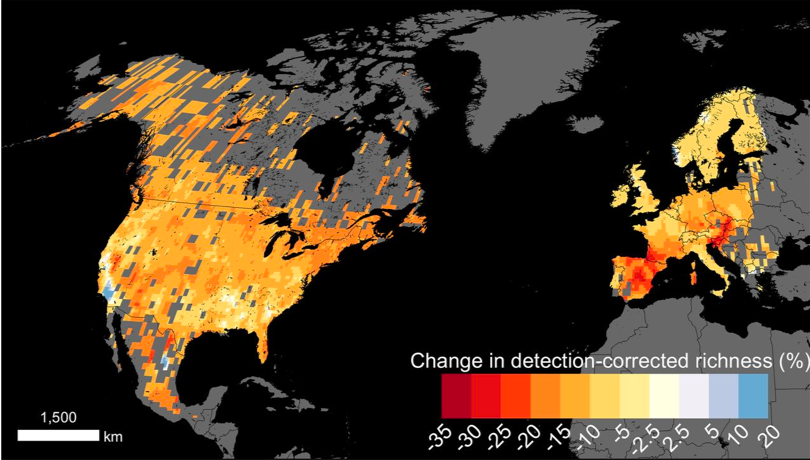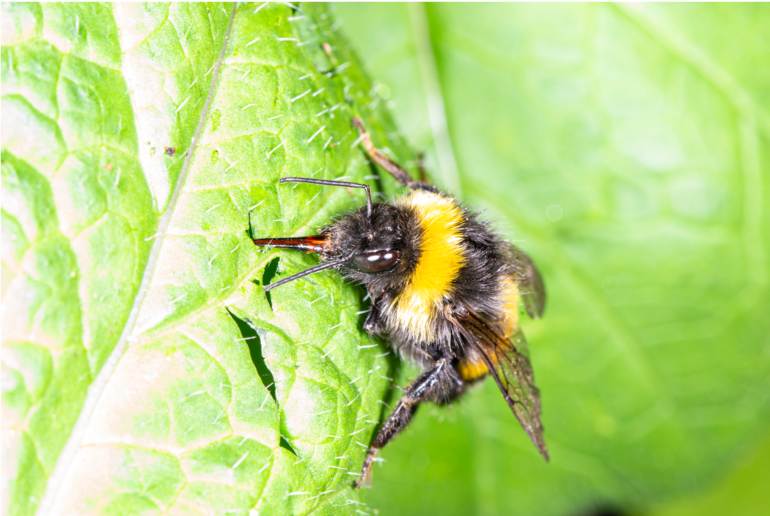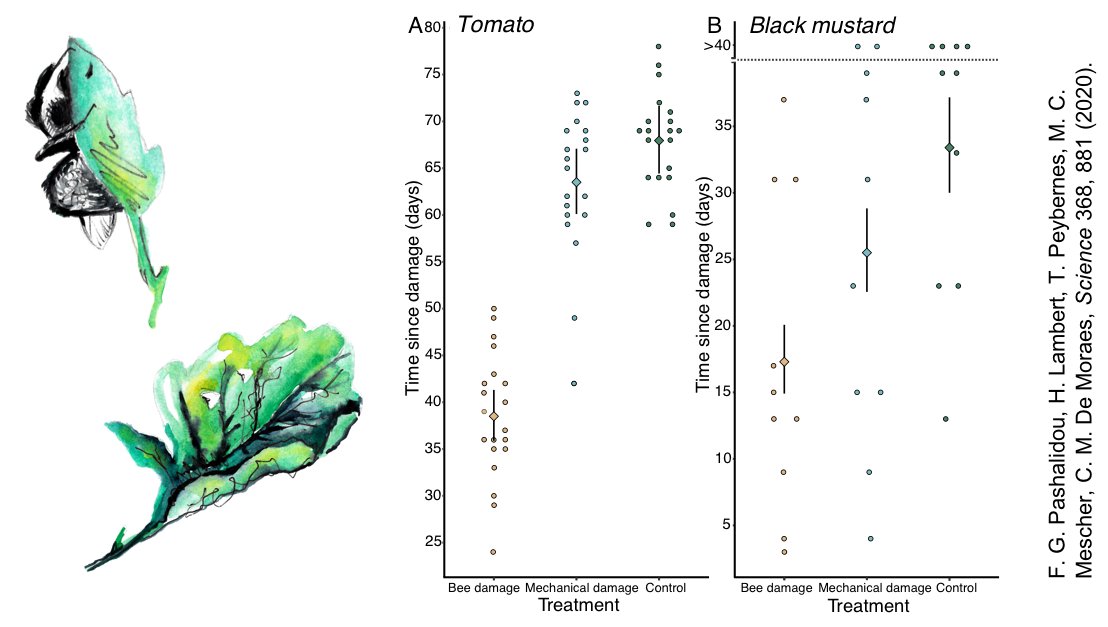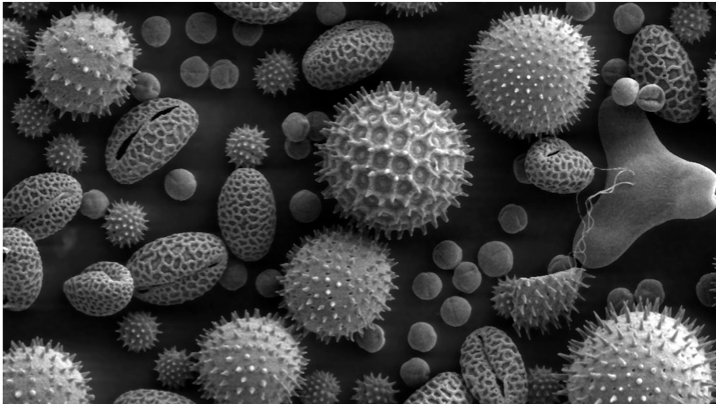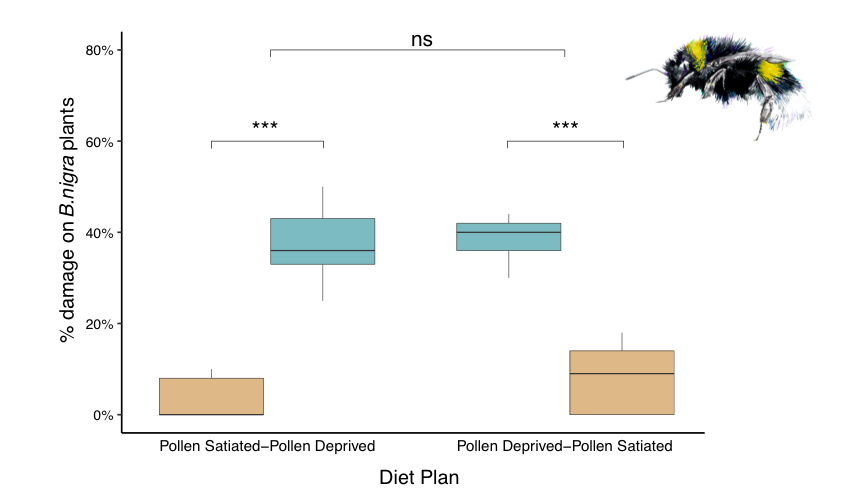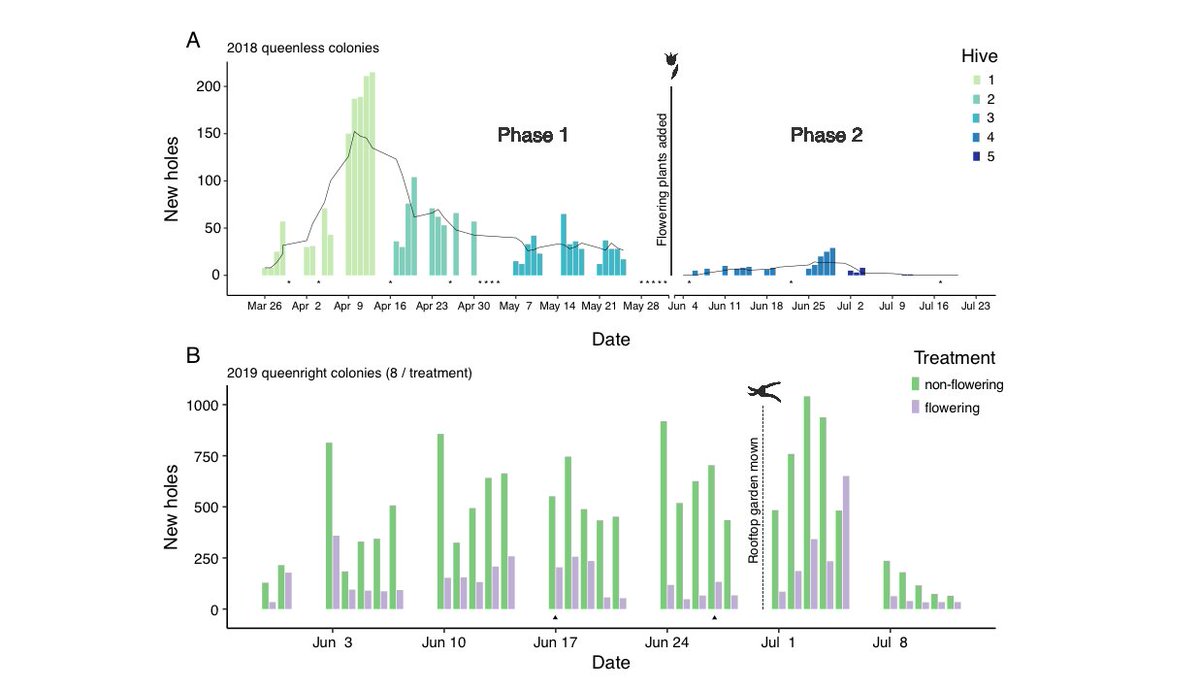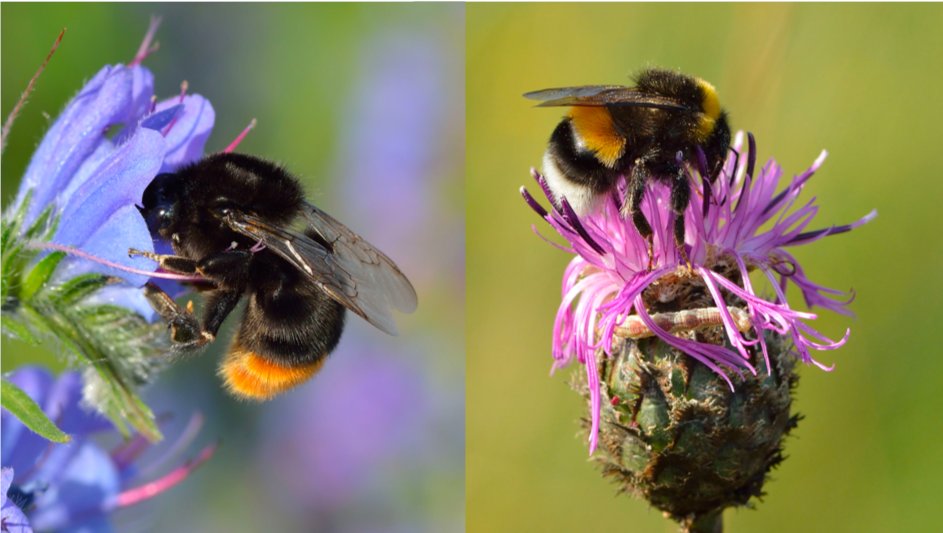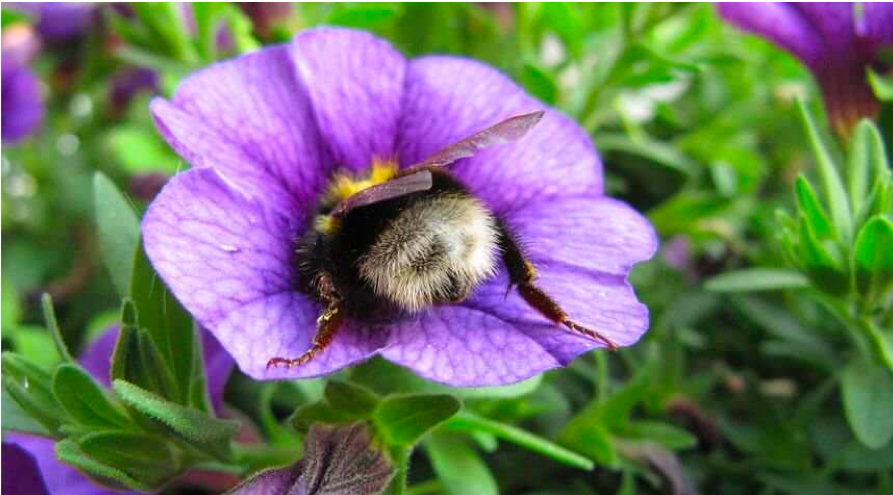Thrilled to have my first paper published in @ScienceMagazine today. Thanks to my amazing co-author @foteini_pas!
We show how #Bumblebees make plants flower earlier - bumblebees are gardening!
A thread 1/17 https://abs.twimg.com/emoji/v2/... draggable="false" alt="👇" title="Down pointing backhand index" aria-label="Emoji: Down pointing backhand index">
https://abs.twimg.com/emoji/v2/... draggable="false" alt="👇" title="Down pointing backhand index" aria-label="Emoji: Down pointing backhand index">
Paper: https://science.sciencemag.org/content/368/6493/881
https://science.sciencemag.org/content/3... href="https://twitter.com/ETH_en">@ETH_en & @usys_ethzh
We show how #Bumblebees make plants flower earlier - bumblebees are gardening!
A thread 1/17
Paper: https://science.sciencemag.org/content/368/6493/881
2/17 #Bumblebees are excellent pollinators for many fruits and vegetables.
Unlike honey bees, bumblebees do not have a permanent colony. In autumn, each colony dies and only the young, mated queens hibernate, ready for spring when they start a new nest.
Unlike honey bees, bumblebees do not have a permanent colony. In autumn, each colony dies and only the young, mated queens hibernate, ready for spring when they start a new nest.
3/17 When the young queen emerges, she must rapidly establish a new nest. The failure rate of colonies is very high during early development, so having a succession of suitable flowers available is CRUCIAL.
See Bumblebees: their behaviour and ecology by @DaveGoulson
See Bumblebees: their behaviour and ecology by @DaveGoulson
4/17 Coordinated timing or #phenology between bumblebees and flower emergence are tightly associated.
However, scientists observe increasing ‘hunger gaps’ owing to habitat modification and loss.
@TomTimberlake92
However, scientists observe increasing ‘hunger gaps’ owing to habitat modification and loss.
@TomTimberlake92
5/17 Climate change is also driving global bumblebee declines. Increasing weather events and extreme temperatures help push bees out of sync with flowers, which explains some of the dramatic losses.
@PeterSoroye @tnewbold31
@PeterSoroye @tnewbold31
6/17 Understanding how Bumblebees adapt to ongoing environmental change is more important than ever, particularly in these vulnerable early stages.
What if bumblebees could play an active role in shaping their environment?
What if bumblebees could play an active role in shaping their environment?
7/17 We noticed bumblebees behaving very strangely in the lab. Foraging workers were deliberately making holes in the leaves of flowerless plants given to them.
8/17 Using their mandibles and tongue, workers consistently made holes in multiple plant species. Each hole took a few seconds, but bees didn’t seem to be collecting tissue or getting anything from the leaf.
Why were they doing this?
Photo credit: https://bit.ly/hannier_pulido ">https://bit.ly/hannier_p...
Why were they doing this?
Photo credit: https://bit.ly/hannier_pulido ">https://bit.ly/hannier_p...
9/17 To find out, we started tracking the effect of bee damage on flower emergence.
Even with a small number of holes, plants consistently flowered earlier compared to mechanical or undamaged controls.
Even with a small number of holes, plants consistently flowered earlier compared to mechanical or undamaged controls.
10/17 Tomato plants came into flower a month sooner than would normally be expected  https://abs.twimg.com/emoji/v2/... draggable="false" alt="🙀" title="Weary cat face" aria-label="Emoji: Weary cat face">
https://abs.twimg.com/emoji/v2/... draggable="false" alt="🙀" title="Weary cat face" aria-label="Emoji: Weary cat face"> https://abs.twimg.com/emoji/v2/... draggable="false" alt="🙀" title="Weary cat face" aria-label="Emoji: Weary cat face">
https://abs.twimg.com/emoji/v2/... draggable="false" alt="🙀" title="Weary cat face" aria-label="Emoji: Weary cat face"> https://abs.twimg.com/emoji/v2/... draggable="false" alt="🙀" title="Weary cat face" aria-label="Emoji: Weary cat face">
https://abs.twimg.com/emoji/v2/... draggable="false" alt="🙀" title="Weary cat face" aria-label="Emoji: Weary cat face">
11/17 We suspected this behaviour was related to a shortage of pollen inside the nest, the only source of protein for #bumblebees.
We started devising experiments to test whether multiple colonies would damage leaves in predictable ways.
We started devising experiments to test whether multiple colonies would damage leaves in predictable ways.
12/17 We assigned colonies either a “pollen satiated” or “pollen deprived” diet. Halfway through the experiment, we switched the diets to see the effect of pollen access on damaging.
Result? Hungry bees consistently made more damage.
Result? Hungry bees consistently made more damage.
13/17 But how would this work outside the lab?
For two years, we repeated semi-natural experiments on roofs at @usys_ethzh. We found that bumblebee colonies always made more damage when flowers were limited.
For two years, we repeated semi-natural experiments on roofs at @usys_ethzh. We found that bumblebee colonies always made more damage when flowers were limited.
14/17 We also observed wild workers from other bumble bee species damaging our flowerless plant patches, showing that the behaviour is common outside the lab and not restricted to domesticated Bombus terrestris.
15/17 We show that #Bumblebees perform an efficient trick to get flowers earlier when pollen resources are urgently needed. Moreover, this may help bumble bees to mitigate some of the impact of environmental change.
#PhenologicalMismatch
#PhenologicalMismatch
16/17 Although these findings open many more questions, particularly in regard to the adaptive nature of bee damaging, I will leave you with this; maybe bees are acting as horticulturists after all?
Thanks for the great perspective by @LChittka
https://science.sciencemag.org/content/368/6493/824">https://science.sciencemag.org/content/3...
Thanks for the great perspective by @LChittka
https://science.sciencemag.org/content/368/6493/824">https://science.sciencemag.org/content/3...
17/17 This paper wouldn’t have been possible without my fantastic co-authors Foteini, Thomas, Mark & Consuelo and the whole #biocommunication group @eth_en.
Thanks for reading & follow me for more!
Research group: https://biocommunication.ethz.ch/ ">https://biocommunication.ethz.ch/">...
Paper link: https://science.sciencemag.org/content/368/6493/881">https://science.sciencemag.org/content/3...
Thanks for reading & follow me for more!
Research group: https://biocommunication.ethz.ch/ ">https://biocommunication.ethz.ch/">...
Paper link: https://science.sciencemag.org/content/368/6493/881">https://science.sciencemag.org/content/3...

 Read on Twitter
Read on Twitter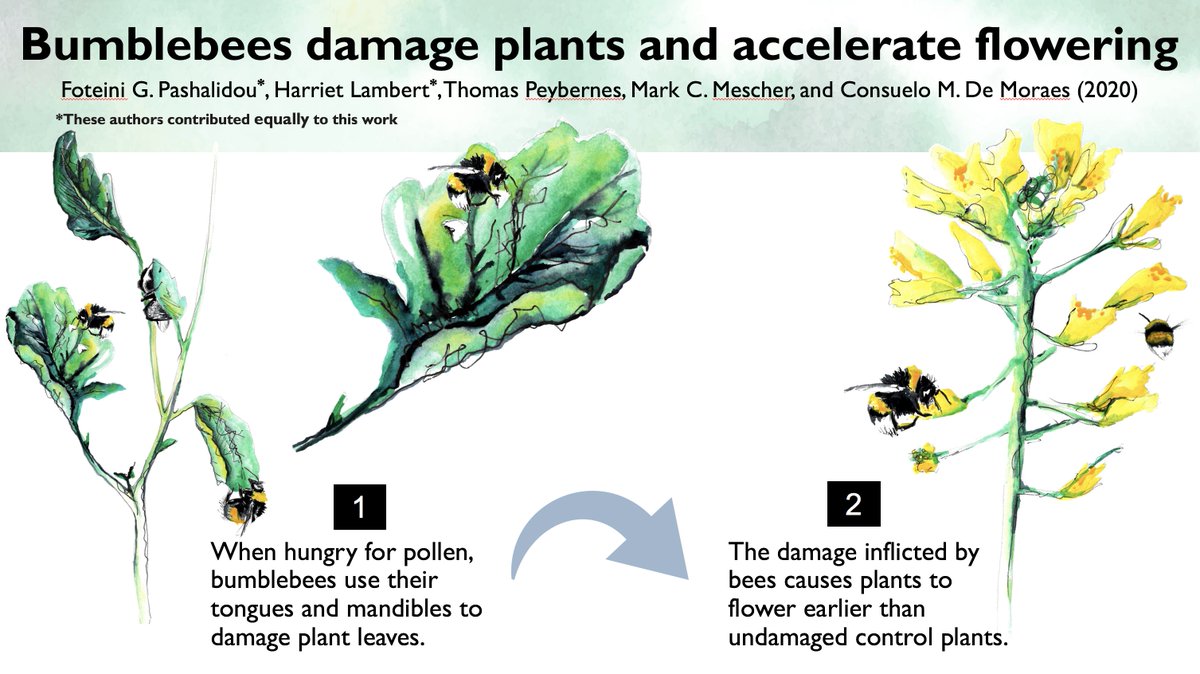 Paper: https://science.sciencemag.org/content/3... href="https://twitter.com/ETH_en">@ETH_en & @usys_ethzh" title="Thrilled to have my first paper published in @ScienceMagazine today. Thanks to my amazing co-author @foteini_pas!We show how #Bumblebees make plants flower earlier - bumblebees are gardening!A thread 1/17 https://abs.twimg.com/emoji/v2/... draggable="false" alt="👇" title="Down pointing backhand index" aria-label="Emoji: Down pointing backhand index">Paper: https://science.sciencemag.org/content/3... href="https://twitter.com/ETH_en">@ETH_en & @usys_ethzh" class="img-responsive" style="max-width:100%;"/>
Paper: https://science.sciencemag.org/content/3... href="https://twitter.com/ETH_en">@ETH_en & @usys_ethzh" title="Thrilled to have my first paper published in @ScienceMagazine today. Thanks to my amazing co-author @foteini_pas!We show how #Bumblebees make plants flower earlier - bumblebees are gardening!A thread 1/17 https://abs.twimg.com/emoji/v2/... draggable="false" alt="👇" title="Down pointing backhand index" aria-label="Emoji: Down pointing backhand index">Paper: https://science.sciencemag.org/content/3... href="https://twitter.com/ETH_en">@ETH_en & @usys_ethzh" class="img-responsive" style="max-width:100%;"/>
